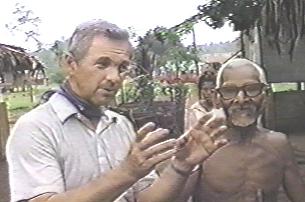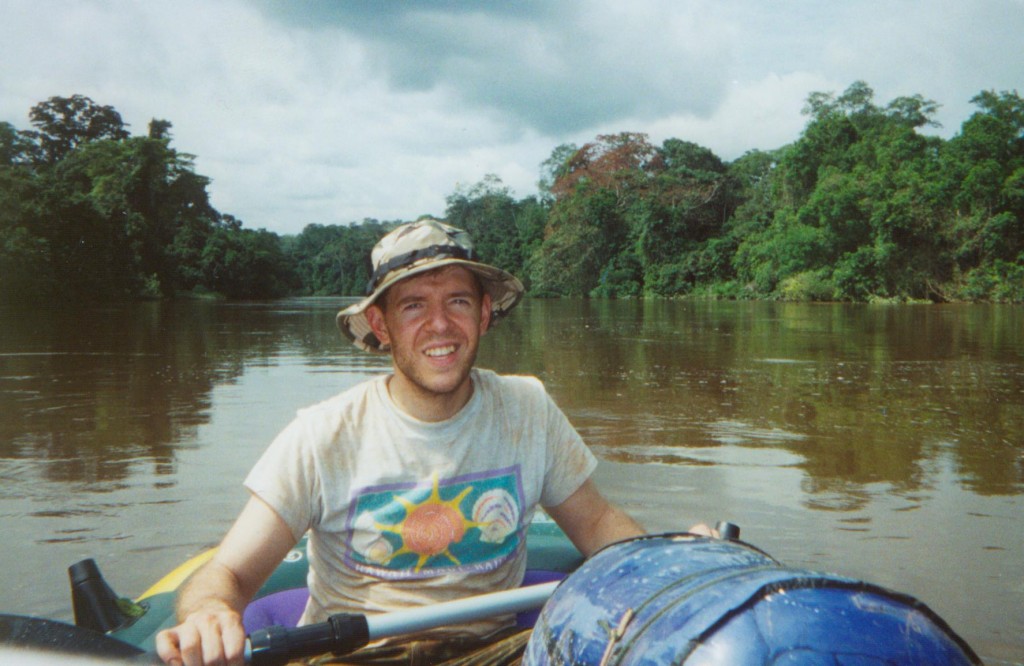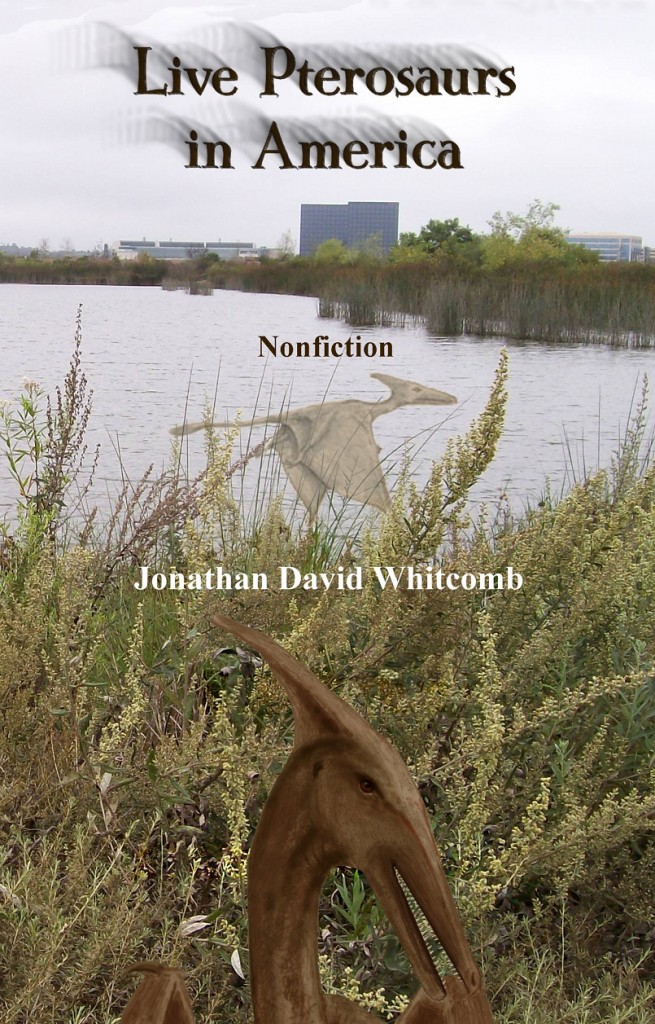Brian Switek was correct in one point: The news reporter Terrence Aym fell into a serious blunder in referring to an image of a common Frigate Bird as if it were a ropen or pterosaur. (But Switek’s blunders are so serious that I will not even link to his blog post.) I set aside, for the moment, the numerous errors in Aym’s Salem-News article, for the major errors in Switek’s Smithsonian post, although fewer in number, are more detrimental to the progress of human knowledge and understanding. I now refer to the August 16, 2010, blog post on the Smithsonian Magazine site: “Don’t Get Strung Along by the Ropen Myth,” by Brian Switek.
He mentions no human names, in the first two paragraphs of his post, but tells us of his disappointment in his youth when rumors of living dinosaurs did not result in any scientific discovery. He mentions no decade for those cryptozoological expeditions, and he tells us nothing about why he came to label those unnamed persons negatively or why recent explorers should also be thought of in a negative sense. Brian Switek said:
“Like many self-appointed authorities on the Unknown, the chief advocates of living dinosaurs turned out to be hucksters, overly-credulous wildlife enthusiasts, or young-earth creationists . . .”
If there is no doubt that those earlier advocates were hucksters, why not mention their names? I submit that this labeling of unnamed persons “hucksters” is inappropriate, implying that the persons soon to be named are in that same category. It also brings up the idea that Mr. Switek is not the most objective writer to evaluate the work of James Blume and David Woetzel, to say the least.
.

James Blume has been a Baptist missionary, for decades, in Papua New Guinea. Contrary to an implication in Aym’s article, referenced by Switek, Blume is not usually considered an “explorer,” at least he would not likely call himself that; he has, however, assisted American explorers on many occasions. He has also spoken with many natives, regarding traditions and sightings of the ropen or apparent pterosaurs or large flying creatures.
.

David Woetzel (apparently misspelled once in Aym’s article: “Davie Woetzel”) is an explorer, by all accounts, and unquestionably a Young Earth Creationist. Switek mentions this religious belief as if it discredits everything done by explorers, but he fails to mention that Woetzel’s beliefs are similar to Sir Isaac Newton’s. Nobody insinuates that Newton was a huckster.
Pterosaur Bioluminescence
Switek’s post on the Smithsonian blog mentions Woetzel’s idea of pterosaur bioluminescence as one of a number of “anecdotes.” What Switek fails to mention are details about where the idea of bioluminescence comes from regarding the ropen sightings. He could have done much better if he had done more research, with a more open mind about the possibility that those with a different religious belief system his his own may nevertheless make important contributions to human knowledge, even if those religious persons do not have as distinguished a name as “Newton.”
My own expedition on Umboi Island, Papua New Guinea, late in 2004, preceded Woetzel’s expedition by several weeks. I was qualified to interview natives there, being a forensic videographer, experienced in videotaping while interviewing an eyewitness. I also knew a little of the Tok Pisin language, although I mostly relied on interpreters for both Tok Pisin and the local Kovai tongue. Many native islanders were eyewitnesses of the ropen light, and I had almost unlimited access to accounts of the flying light. I also had, after returning to the United States, many months to analyze the data from those interviews, before writing my nonfiction cryptozoology book Searching for Ropens (now in its second edition).
The second expedition of 2004 included the Americans David Woetzel and Garth Guessman. I have used the label “light expedition” for both of the 2004 investigations on Umboi Island, for few explorers were involved, with limited supplies and limited time. But the preparations were substantial, for all three of us, and our efforts were intense, and the assistance from a number of local villagers made a major difference. Both expeditions were successful.
Why does Mr. Switek use the word “anecdote” to include the idea that modern pterosaurs in Papua New Guinea are bioluminescent? He uses that word in the same sentence as the name “Woetzel,” referring to David Woetzel, but I wonder if Switek did any reading of anything beyond Aym’s faulty newspaper article. I have watched several segments of the videos Woetzel and Guessman recorded. There may be some moments when “anecdote” might apply, but those moments are limited.
Woetzel had his own sighting of what seems to have been a “ropen” light, as it flew behind the mountains surrounding Lake Pung. His recounting that sighting experience in his scientific paper (published in a peer-reviewed journal of science) is hardly worthy of the word “anecdote.” Contrary to what was reported in the newspaper article by Mr. Aym, that explorer videotaped neither any ropen light nor any form of a pterosaur. The significance? Having searching for weeks for a living pterosaur without seeing any form or shape of one, and having promoted the idea of modern living “pterodactyls” (as some call them), Woetzel can hardly be accused of lies. If he had any inclination to lie, he would have reported something resembling a pterosaur, not just an undefined light. Having reported an unmeteoric flying light, we need to consider the possibility that it was some kind of bioluminescence.
If Mr. Switek objects to reading reports from those with different religious beliefs from his own, what about the British biologist Evelyn Cheesman? She wrote about the flying lights that she observed near Mondo, New Guinea, (early 1930’s) in her book The Two Roads of Papua. I have never read anything by her or about her that would indicate her religious beliefs were different from Mr. Switek’s present religious beliefs. I suggest Switek read what Cheesman has written about those strange flying lights.
I agree with Brian Switek: Serious problems made the newspaper article in the Salem-News an embarrasment; but that does not discredit the valid research and investigations by many men, over many years, who have in common that their accomplishments have been admired by a reported who was careless in writing about the subject.
More Reactions to “Don’t Get Strung Along by the ‘Ropen’ Myth”
Smithsonian Attacks Ropen Myth
[Switek wrote:] “even if a long-tailed pterosaur were found it would do nothing to undercut the science of evolution.” In other words, whatever happens, Switek’s philosophy is correct. I think that reasoning, if it could be called reasoning, is too convenient, revealing that it is a philosophy that is being protected, not science. True scientific reasoning does not include “whatever the outcome, whatever the evidence, my idea must be correct.”
Ropen Dismissed by Smithsonian
With all those negative comments towards those he disagrees with, I wonder if Mr. Switek has ever heard of the word “bulverism.” In the same paragraph, he also mentions, “young-earth creationists intent on somehow disproving evolution by finding creatures thought to have been long extinct.” But the conflict between extreme origin philosophies is too deep for him to adequately cover in his post.
Smithsonian Officials Appear Guilty
The writer with the Smithsonian, Brian Switek, in a blog post with that institution, severely criticized the opinion that there may be a living pterosaur.
Live Pterosaurs in America, third edition, will take you on a whirlwind tour of eyewitness sightings of modern pterosaurs in many of the contiguous states of the U.S.A., for this nonfiction book is the result of years of research and interviews in cryptozoology.



